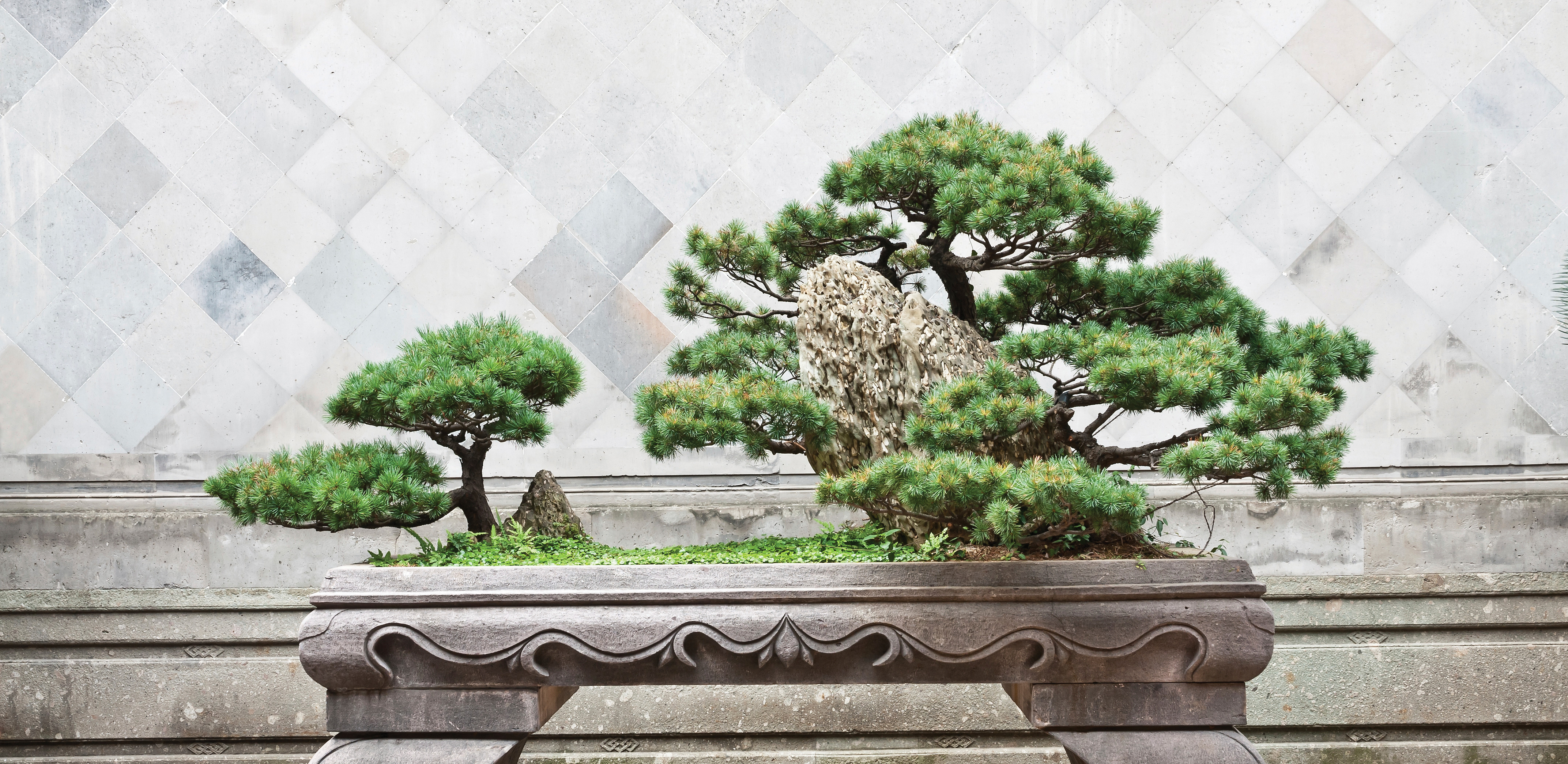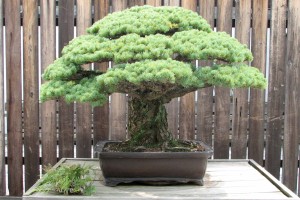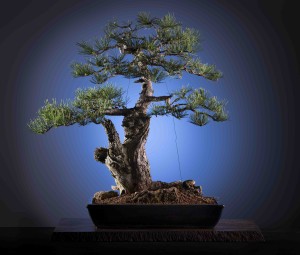Seeing the beauty through the trees | by

Ancient art of bonsai offers patients lessons in gardening, life
Bonsai (pronounced bone-sigh)
Literal definition: bon (tray) sai (plant)
Definition: a potted plant (as a tree) dwarfed (as by pruning) and trained to an artistic shape; also: the art of growing such a plant (Merriam-Webster)
Most people who take a bonsai class with Larry Jackel never look at a tree in the same way again. His love of the ancient art ̶ creating and nurturing dwarfed trees in a pot ̶ and the nature it represents shine through to his students, often offering a different perspective not just of trees, but of life itself.
So say his partners, Angie Andrade Foster and Linda Cooper, who lead a bonsai class with Jackel, held at the Denver Botanic Gardens and jointly sponsored by the Rocky Mountain Cancer Centers.
Amid the beauty of the Botanic Gardens, and engrossed in the meditative Japanese art, cancer patients can find calm during a difficult time, whether they take what they learn beyond the garden gates or not, says Andrade Foster, a DBG horticultural therapist. “We don’t force anything,” she says, referring to the transformational lessons that can be extracted from the class. “We present it and discuss it and let everyone get what they want from it.”
Class begins with a primer on the art of bonsai from Jackel. Then, selecting from a line of bushy, 4-inch stock junipers, students choose their trees. Their mission? To find the beauty in the scraggly plant. “It’s sort of like the sculptor that works with a chunk of marble,” says Jackel, DBG’s bonsai expert. “There’s a beautiful statue in there somewhere. We just have to get rid of all the excess stuff on the outside to find it.”
Armed with sheers and other tools, students set out to uncover their vision, generally hesitating at first, says Cooper, an RMCC social worker who came to Jackel and Andrade Foster with the idea for the class about three years ago. “It’s fascinating to watch people have that ‘ah-ha’ moment and really start pruning and making their trees more interesting,” Cooper says. “Most of us are reluctant to do that — get rid of the extraneous things ̶ but it’s something we should be doing in life.”

DID YOU KNOW? A 400-year-old bonsai tree that survived the bombing of Hiroshima and was given to the United States from Japan is displayed in the U.S. National Arboretum.
Bonsai involves replicating a tree in nature, including its imperfections. Capturing the scars along with the beauty, the fullness along with the empty spaces, becomes the focus, says Jackel, who teaches students to make their young tree look old, or their perfect branch look scarred, through pruning, wiring and the use of negative spaces. “Sometimes what’s most important in art is what’s not there,” he says, referring to creative pruning to make gaps between the branches. “The Japanese call this a space for birds to fly through.”
Students then learn how to care for their new treasure for life, including potting, feeding, watering, lighting and preventing disease. The art of bonsai, focused on a respect of aging, requires a mastery of horticultural skills, with some trees living hundreds of years and passed from generation to generation. “At a simplistic level, these concepts can be applied to how we might choose to live our lives — basic healthy living, making changes as we grow,” Jackel says. Cooper agrees. “It’s easy for people to make the connection ̶ that what is going to help them keep that plant alive may also serve them well as they look to their lives, being in the sun, getting plenty of hydration, the need to stop and breathe,” she says.
Therapeutic gardening’s popularity has grown, used for a range of issues from aging to mental illness, including at DBG, Andrade Foster says. Studies continue to tout the therapy’s benefits, and the University of Denver is set to launch a study of the Botanic Gardens class and its therapeutic uses for cancer patients. “Once people are drawn into the moment, they aren’t thinking of what’s happening down the road,” Jackel says. “It’s such a challenging activity to do, everything else gets left behind.”
If you go:
What: The Cancer Journey as Reflected in the Japanese Art of Bonsai
Where: Denver Botanic Gardens
When: Three-day class in August; one-day class in October
More information: Rocky Mountain Cancer Centers, Linda Cooper, (303) 370-7902
Tags: Denver Botanical Gardens, Rocky Mountain Cancer Center
Leave a Comment
Please be respectful while leaving comments. All comments are subject to removal by the moderator.

